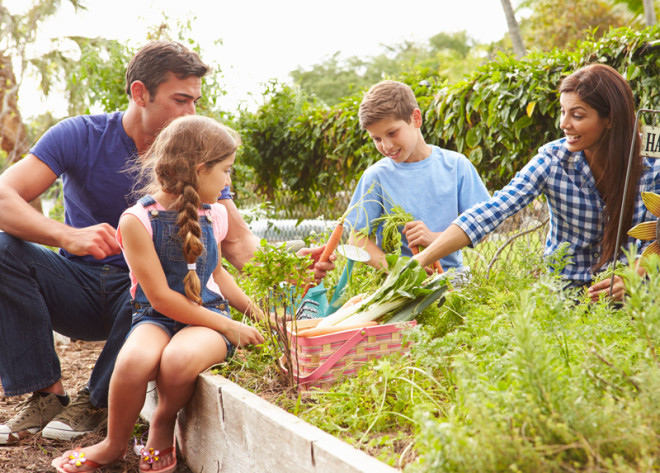Spring has sprung! The sun is out, birds are chirping, and around the country, green thumbs are getting ready to garden.
We love a good garden. Not only does fresh food taste great, it can have a positive environmental impact. Chew on this; you can save roughly two pounds of CO2 for every pound of delicious fruits and veggies that you grow.
Now we’ve talked about CO2 before. It is the chief greenhouse gas emitted through human activities and it is one of the main culprits in climate change and air pollution. But did you know that CO2 is also plant food?
Our garden buddies pull CO2 from the air into their leaves and suck water through their roots. They then use energy from the sun, to convert these two key ingredients into glucose (to fuel growth) and oxygen (for us to breathe). Gardens really are a green gift that keeps giving.
While gardening can boost our mood and health, growers can also feel good about their contribution to the planet’s well being. That’s because by growing our own produce, we are helping to curb greenhouse gas emissions.
Here’s a jaw-dropping tidbit – the average meal travels 1200 km from farm to your plate. And food travel isn’t the only source of emissions. Commercial farming involves fertilizers, vehicles, fuel, and processing equipment as well as significant refrigeration to keep the food from spoiling while it makes that long journey to your shopping cart. All these things add up!
Buying locally grown items or better still, growing your own food can help reduce your carbon footprint. Plus, we think this food tastes better. Since home-grown produce only needs to travel from outside to your kitchen, it can ripen and be picked at the optimal time.
With gardening season around the corner, here are a few tips to help you spring into action this year:
1. Tidy up – Invest some time, removing leaves and debris from your garden beds. You’ll want to cut back any old growth that didn’t come out at the end of last season in order to clear the way for the next generation of greenery.
2. Prep the soil – Give your garden the best start by ensuring the soil is healthy and ready to host your seeds and plants. A soil test kit is a good idea so you know what you are dealing with. Keep in mind that most veggies prefer slightly acidic soil (pH 6 – 6.8).
3. Mix it up – Loose, aerated soil will help your plants get the best start. Use a spade or fork and dig down 12 to 14 inches, then incorporate a 3 to 4 inch layer of compost or manure.
4. Prep your tools – Don’t work harder than you have to. A little work cleaning and sharpening your tools will save you time in the long run. Plus, you won’t have to replace them as often and you’ll be helping prevent the spread of disease.
With all that done, now you can start thinking about what delicious things you will grow this season. And we will be back shortly with more green gardening ideas and tips to inspire you!
About The Author

-
Serial Entrepreneur, Technologist and Inventor.
My objective is to develop useful products that have a net positive effect in the lives of those that use them and the environment that we live in.
CEO of Mission LED Lighting Company Ltd.
- 2017.05.24LED factsWhy Are Cars Switching to LEDs if They’re Too Bright?
- 2017.05.09Be green & saveHow to Easily Replace T8 Fluorescent Tubes With LED
- 2017.03.07Build a better future7 Things About Explosion Proof LED Lighting You Should Know
- 2017.02.28Be green & saveWhy We Love LED Grow Lights (And You Should, Too!)





1 Comment